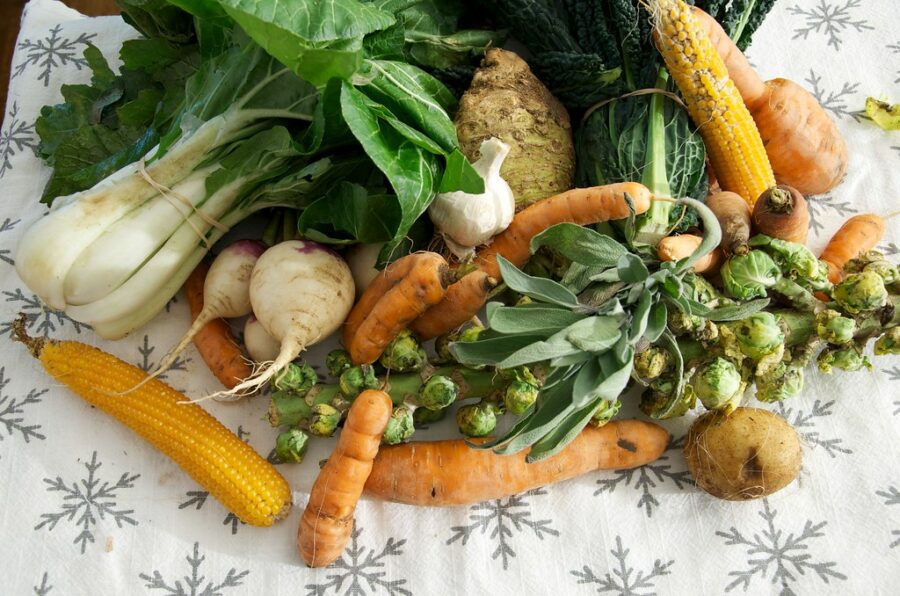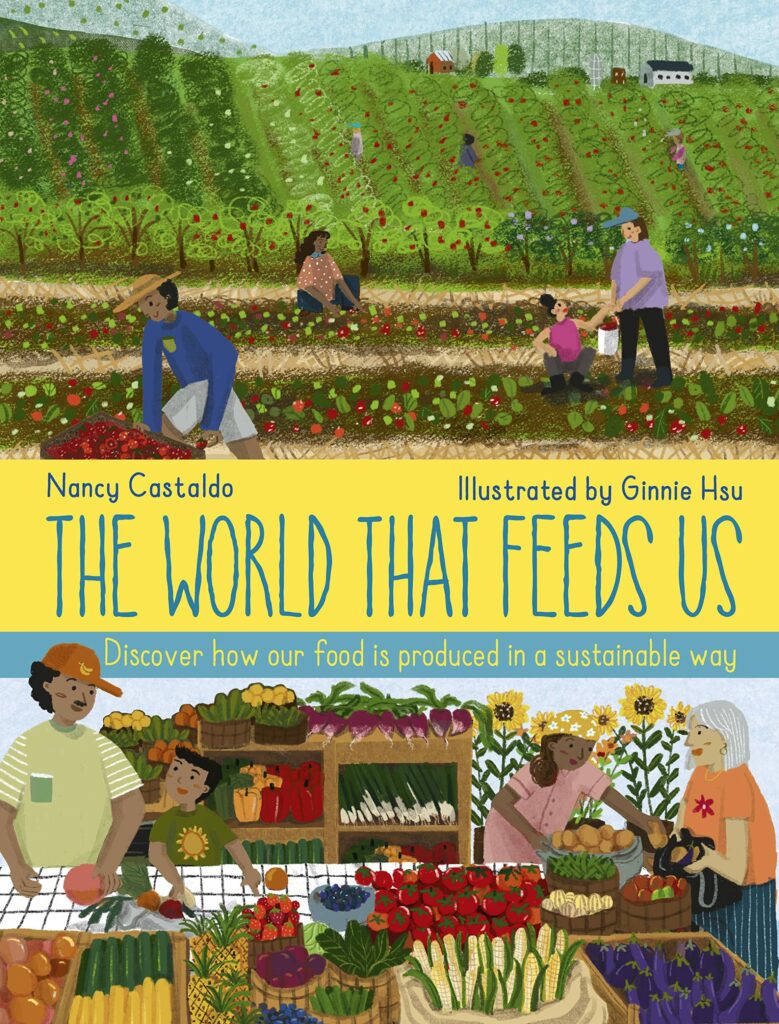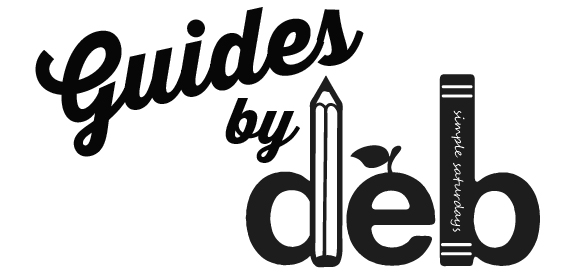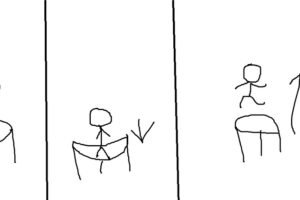GUEST BLOGGER DEBBIE GONZALES
What is an eco-pyramid?
The Eco-Pyramid is a research tool designed to allow students to interpret information, summarize facts, and communicate understanding in a concise and creative format. Shaped like an equilateral triangle, the Eco-Pyramid enhances critical thinking skills by encouraging students to restate verbose terminology in short, succinct phrases. At the onset, the Eco-Pyramid appears to be a breeze to complete. Completing the project requires more cognition than meets the eye.
The free educator guide for THE WORLD THAT FEEDS US, a middle grade picture book about global food sustainability written by Nancy Castaldo and illustrated by Ginnie Hsu, features an Eco-Pyramid Research Project exploring the fascinating themes such as agroecology, green energy, urban farming, seed diversity, and much more. The Eco-Pyramid Research Project featured in this teacher resource consists of six lines to be filled with a designated number of words in correlation with topics explored in the text as well as the discussion questions featured in the guide. Students are encouraged to read the phrase, then rephrase them in micro-terms.
As a side note…
THE WORLD THAT FEEDS US is a companion to THE FARM THAT FEEDS US, a picture book for middle schoolers examining life on a small-scale farm. In it, readers learn not only how the farm feeds us, but how the farmer must feed and care for the farm. THE FARM THAT FEEDS US is a 2021 EUREKA! Nonfiction Children’s Honor Book. Free STEM-related NGSS/CCSS-aligned educator resources are available for this title, as well.
Here’s how the eco-pyramid works
THE WORLD THAT FEEDS US examines topics such as food sources, harvesting practices, technological advances in farming, and the ethics involved in all aspects of agriculture – worldwide. Because contemporary middle school readers find issues such as these to be both engaging and relevant, THE WORLD THAT FEEDS US offers educators the opportunity to painlessly enhance reading comprehension and research skills by rephrasing the following Eco-Pyramid Research Project statements:
- Line 1. One word to identify the type of farming that provides for current and future generations.
- Line 2. Two words to identify the odorless gas made by breathing, burning, and photosynthesis.
- Line 3. Three words to describe green energy.
- Line 4. Four words to describe urban farming.
- Line 5. Five words to define the word “biodiversity”.
- Line 6. Six words listing choices humans can make to maintain health and to protect the planet.
Once research is complete, students are instructed to write an essay summarizing the information gathered by the Eco-Pyramid, then share their work with the class.
If you are looking for a short research project designed to enhance critical thinking skills by giving students the opportunities to apply their understanding of a STEM-related text in a creative way, the Eco-Pyramid Research Project designed for THE WORLD THAT FEEDS US is for you. Students care about world-wide climate zones, environmental sustainability, and the long-term impact these things have on food production. Their passion for these topics offers educators rich, teachable moments. The Eco-Pyramid Research Project is the perfect tool to reinforce their learning experience.
Featured image credit: “stoneledge farms CSA (Community Supported Agriculture) Local Farming Week Twenty-Three CLS_6167” by smith_cl9 is licensed under CC BY-SA 2.0.
Children’s author, career educator & Pinterest marketing specialist, Debbie Gonzales is the founder of Pin Lit Marketing, a boutique Pinterest marketing agency for book sellers & creators. Deb is the author of the nonfiction picture book GIRLS WITH GUTS: THE ROAD TO BREAKING BARRIERS AND BASHING RECORDS. She’s the host & creator of Guides by Deb, a website consisting of over 300 standards-aligned educator guides for all genres. Learn more about Deb at debbiegonzales.com or guidesbydeb.com.














Leave a Reply
Your email is safe with me.